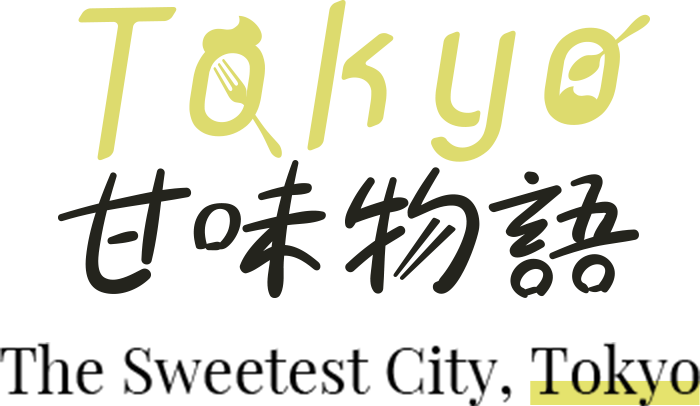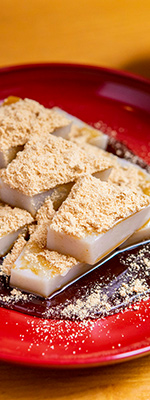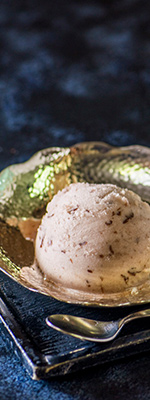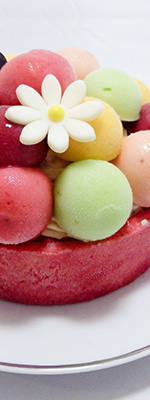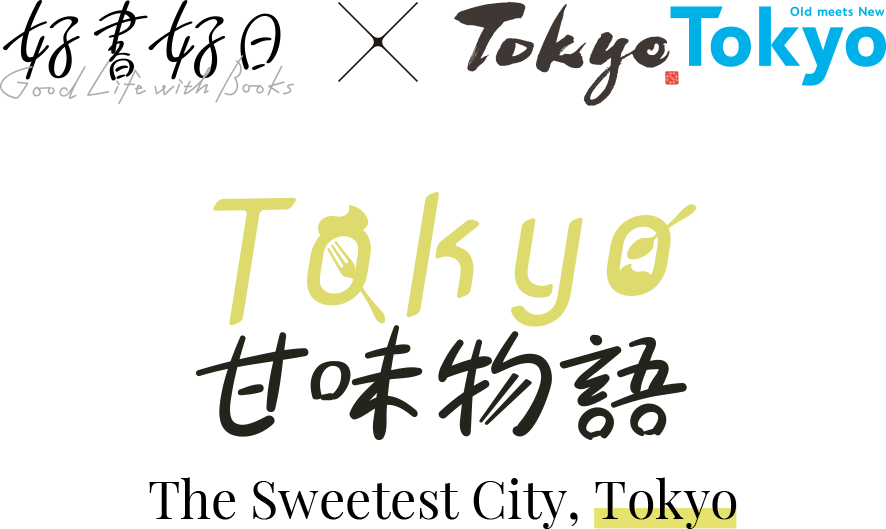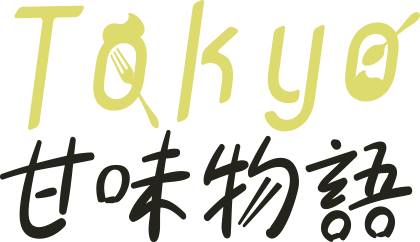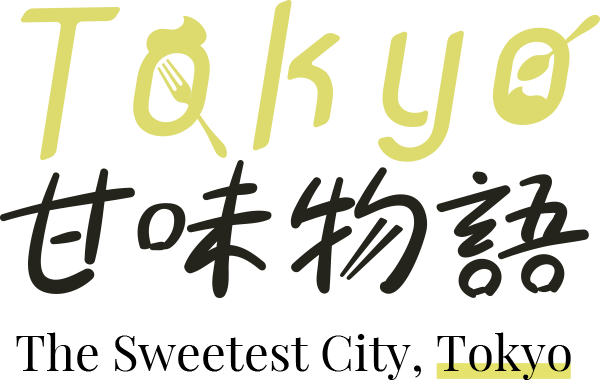
Shibatayama sumo-stable master tastes and compares
“The Three Big Dorayki of Tokyo”
Shibatayama sumo-stable master
tastes and compares
“The Three Big Dorayki of Tokyo”
Stable Master Shibatayama
[Shibatayama sumo-stable coach/62nd Yokozuna
(Sumo Grand Champion), Onokuni]
Dorayaki, a confection known for its familiarity and simple taste, is often given as a gift that brings harmony. This wonderful “partner” that enlivens communication is especially common as a popular item found in abundance in long-established shops in downtown Tokyo. This time, we did a closeup on Usagiya (Ueno), Kameju (Asakusa) and Kuromatsu Honpo Sogetsu (Higashi Jujo), the shops that make the “The Three Big Dorayki of Tokyo!” Shibatayama sumo-stable master, who is known to have a really sweet tooth, tried and compared the three types and talked about the appeal of each.
[Report: Tomoyo Okayama/Photographs: Junko Saito]
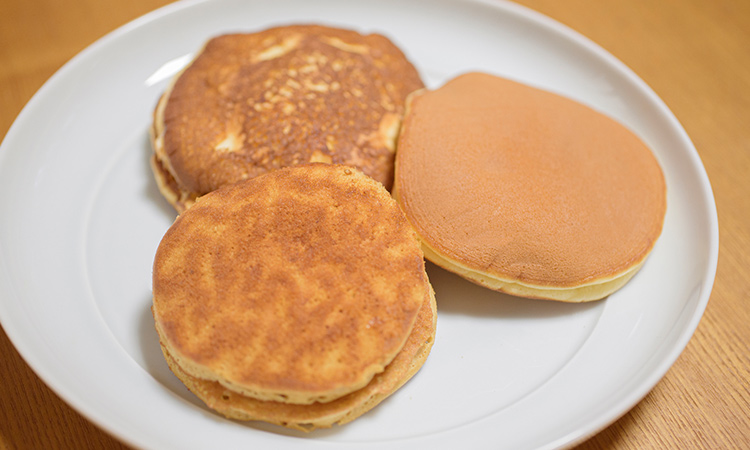
Editorial Department members visited the Shibatayama sumo stable as the year was coming to a close. As the stable master watched the Dorayaki being removed from their wrappers and arranged on a plate for him to try, he quickly fired off questions, identifying the different items; “The one with the smooth surface is from Usagiya, isn’t it?” “Just as you’d expect, the Kameju Dorayaki is big, isn’t it!” “And this one with the tiger pattern must the Sogetsu Dorayaki.”
Looking as if he was ready to dive into the interview right away, the stable master said to one of his apprentices, “Make us some tea!” By the time the hot green tea was served, preparations had been made and the sampling was about to start. When we asked him which Dorayaki he was going to start with, he picked up the “Kameju” Dorayaki with his big hand.
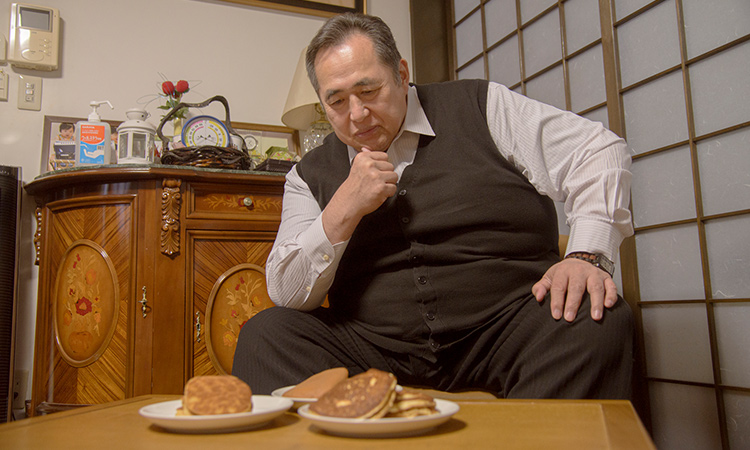
Shibatayama sumo-stable coach/62nd Yokozuna (Sumo Grand Champion), Onokuni
Kameju
Kameju makes two types of Dorayaki: “Kuroan (red bean paste)” and “Shiroan (white bean paste).” As he reached out and picked up the Kuroan Dorayaki, stable master Shibatayama smiled as he said, “It has a really heavy feel, but when you touch the pancake, it feels soft, like a sponge cake,” explaining the contrast. When he broke the Dorayaki in half and took a bite, he peeled off the pancake as if he had just thought of something. “If you look at the air bubbles that run through empty spaces in the cross section, you can understand how the texture is achieved.”
When I moved to the seat to the left of the stable master, I could see that the dough was tightly packed, and I could see almost no big bubbles at all. Compared to the pancake with column-shaped air bubbles, the stable master explained, “The Kameju pancake is very dense and springy,” going on to say, “Creating this delicate soft texture must be really difficult,” pondering the handwork of the craftsmen.
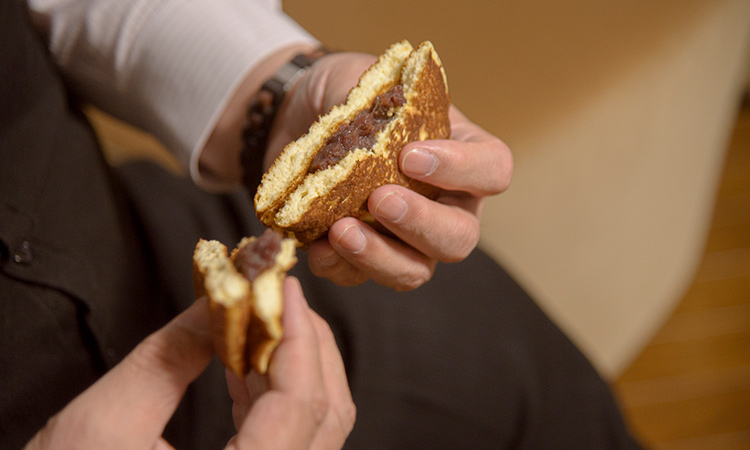
Next, he compared the Kuroan and Shiroan Dorayaki. Commenting, “The sweetness has been carefully matched to the dough in both,” he hesitated, saying, “Shiroan has a light taste, but the Kuroan is appealing too!” finally declaring neither the winner.
Usagiya
Next, the stable master chose the hallmark product of “Usagiya.” “It has a soft browned color, doesn’t it?” and broke the Dorayaki into two to show us. The side in contact with the bean paste was cream colored. Pointing out the shallow one-sided baking, he slowly stuck a toothpick he had taken out into the cross section, and explained, “You see? These column-shaped air bubbles improve the pancake’s texture. The smooth fiber-like texture is the unique taste of Usagiya’s Dorayaki,” giving us an analysis of the pancake.
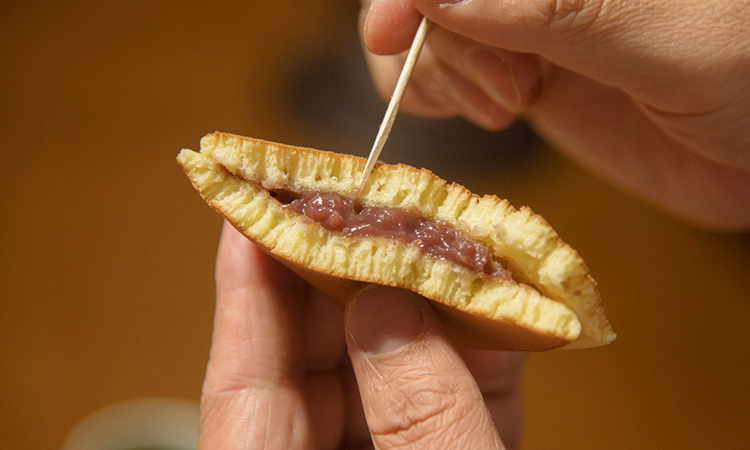
The detailed, easy-to-understand descriptions gave the Editorial Department members the impression that perhaps the stable master took part in study groups made up of production supervisors of Dorayaki shops. The next topic of Professor Shibatayama’s lecture was red bean paste. “This is really soft Tsubuan (coarse red bean paste). They must take great pains with the boiling time,” he said. Disliking the disagreeable sensation of red bean skin left on the tongue, the stable master declared that he was a Koshian (smooth red bean paste) fan. Although we felt embarrassed because the shops selling The Three Big Dorayki of Tokyo we had introduced all used Tsubuan, the stable master dispelled our concerns over the two types he had tried so far, saying, “While there was some residual graininess from the red beans paste, there was no unpleasant sensation of bean skin on the tongue.” He especially seemed to like the slowly boiled Usagiya Tsubuan.
Kuromatsu Honpo Sogetsu
Last was the “Kuromatsu” Dorayaki of Kuromatsu Honpo Sogetsu. Looking at the characteristic tiger pattern, stable master Shibatayama found glossy patches on the sides of the pancake. “The shiny apple honey-like sheen makes the confection look tasty.” “Maybe some of the brown sugar and honey used in the dough seeped out,” he said with interest.
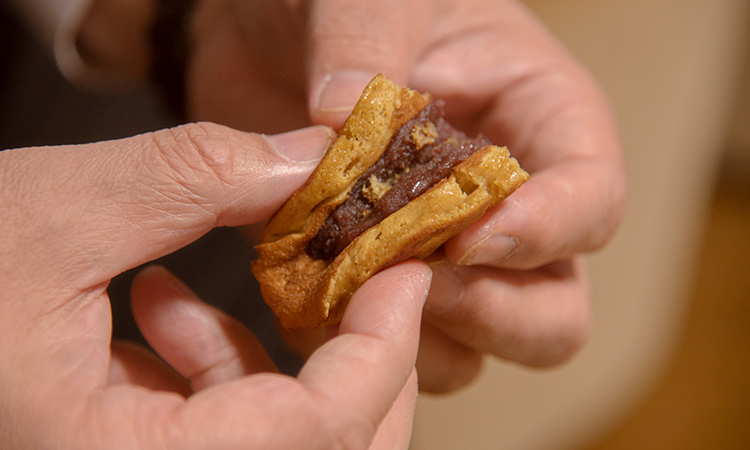
From the feel of the Dorayaki in the hand, stable master Shibatayama expected that the pancake would be “soft and fluffy.” “Maybe there are no air bubbles running through the pancake,” he said, and proved that he was right when he broke the Kuromatsu Dorayaki into two. We could see almost no air fiber-shaped bubbles that give a crispy sensation on the tongue, so that the pancake had soft texture close to a chiffon cake. Biting off a piece, the stable master commented, “You can taste the brown sugar and honey. I wonder how well this goes with the red bean paste?” trying to find words to express the appeal of the Kuromatsu.
Referring to the Tsubuan, which was not overpoweringly sweet, the stable master declared, “This is a light red bean paste on the hard side that goes well with the sweet pancake.” After trying all The Three Big Dorayki of Tokyo, the stable master pronounced, “It seems to me that each of the shops uses bean paste with a sweetness that matches the dough to produce a work of art,” complimenting the craftsmanship of all three shops.
Overall appraisal by stable master Shibatayama
After trying all of The Three Big Dorayki of Tokyo, stable master Shibatayama gave his overall appraisal, giving his stamp of approval to all three of the shops, Usagiya, Kameju and Kuromatsu Honpo Sogetsu, declaring, “I’m sure that all these Dorayaki would definitely please anyone who tried them.”
After suggesting, “It would be nice to sandwich the soft high-quality Tsubuan of Usagiya with the soft fluffy pancakes of Kameju. Or, if you wanted to enjoy making Dorayaki with emphasis on the dough, you could combine the Usagiya bean paste with the Sogetsu pancake with a rich brown sugar and honey flavor,” he ended the interview with a sense of respect for each of the shops, concluding, “But it’s because they don’t do this that each shop has its own individuality.”
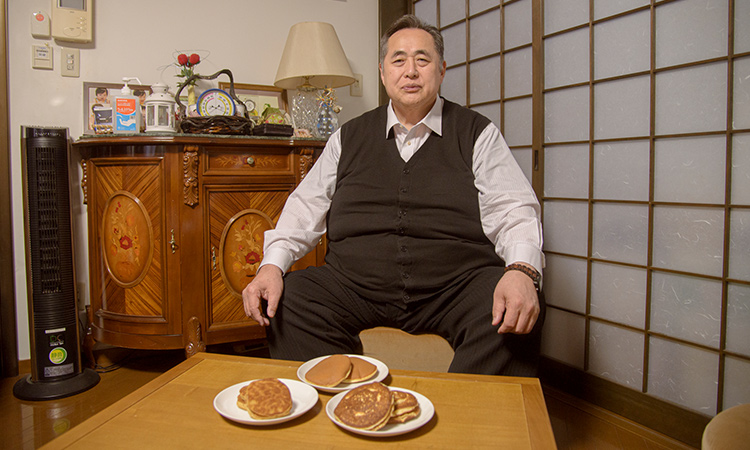
Stable master Shibatayama was born in Memurocho in Hokkaido in 1962. Making his debut in the Dohyo (wrestling ring) in March 1978, he was promoted to the rank of Yokozuna (grand champion) in November 1987. With a career history of 560 wins, 319 losses and 107 absences from the ring, he retired in July 1991 after his second tournament win. After ceasing to be active as a wrestler, he began coaching up-and-coming wrestlers, establishing the Shibatayama sumo stable in 1999, which he still runs to this day. Known for having a real sweet tooth and being a gourmet, in 2006 and 2009, he published a series entitled “62nd Yokozuna Ōnokuni's National Sweets Tour,” (both volumes published by Nikkei Publishing Inc.). Brought up in a home that ran an agricultural and dairy-farming business, his reports were well received, earning him the nickname of “the Sweet Yokozuna” in the media.
Deliciousness without trying to be different
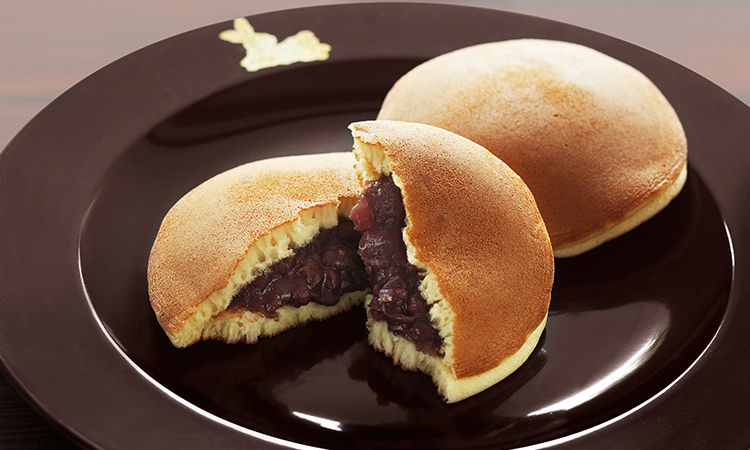
Usagiya is especially fussy about their products being “freshly made.” “There’s nothing more gratifying that seeing customers eating warm freshly made Dorayaki at the shopfront,” says 4th-generation proprietor Takuya Taniguchi. Usagiya’s Dorayaki are characterized by a pancake shallow-baked at a high temperature to remove any column-shaped air bubbles and evenly boiled bean paste with carefully sifted bean “particles” so that the paste is soft right up to the pancakes. Because the moisture from the bean paste in the confection known as Dorayaki gradually penetrates the pancake, endless effort is required so that the confection can be eaten before this happens. At Usagiya Café, which opened in 2015 near Usagiya, customers can enjoy Dorayaki reheated in the style of French toast baked with salty butter (“Dorayaki French Toast” 900 yen). While maintaining the traditions that have remained unchanged since the shop was established in 1913 and constantly reflecting on the question, “Faced with the difficulty of persevering, aware of the watchful eyes of our predecessors, how can we make delicious confections that can be really enjoyed for their taste without trying to be different by blending Japanese and Western styles?” the tastes that 4th generation proprietor Takuya Taniguchi produces are attracting new customers.
[Location]1-10-10 Ueno, Taito-ku, Tokyo
[Access]4-minute walk from Ueno-hirokoji station on the Tokyo Metro Ginza Line,Ueno-okachimachi station on the Toei Oedo Line, or Yushima station on the Tokyo Metro Chiyoda Line
[TEL] 03-3831-6195
[Hours / fixed holidays]
9:00 – 18:00 / Closed on Wednesday
[Official site]
http://www.ueno-usagiya.jp/
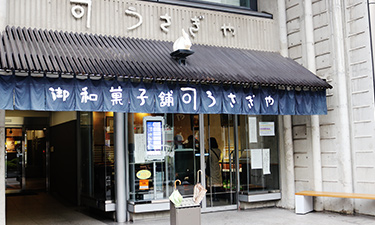
Heavy and big, hit Dorayaki souvenir from Asakusa that is sure to please
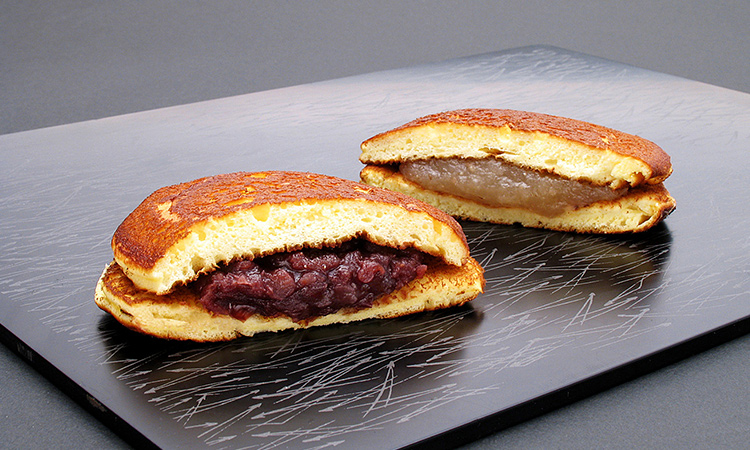
A really big, heavy Dorayaki almost 15cm in diameter. When you take a bite convinced that it would make you feel full, you will probably be surprised by the chiffon cake-like fluffy texture of the pancake. Shuichi Inoue, who has worked at Kameju for twenty years, tells us that the secret is that “before baking the pancakes by hand one by one, the chef aerates the basic dough.” The mottled pattern that appears on the pancake surface during baking produces a characteristic Kameju appearance that cannot be replicated by machines. The fun of comparing “Kuroan” with a refined sweetness that puts you in mind of the taste of red beans produced in Tokachi in Hokkaido and “Shiroan” made from kidney beans, also produced in Tokachi, is also something than only be enjoyed with Kameju Dorayaki. In the latter part of the Taisho era (1912 - 1926), although Kameju didn’t have a lineup of products, the Dorayaki devised by the founder “in search of a new sweetness” has been hugely popular ever since. Nowadays too, Kameju’s Dorayaki is hit souvenir from Asakusa that is sure to please and the shop near Kaminarimon was crowded with customers coming to enjoy Dorayaki, which were sell out by the evening.
[Location]2-18-11 Kaminarimon, Taito-ku, Tokyo
[Access]
1-minute walk from Asakusa station on the Tokyo Metro Ginza Line
3-minute walk from Asakusa station on the Toei Asakusa Line
[TEL]03-3841-2210
[Hours / fixed holidays]
10:00 – 19:00/Irregular holidays (Approximately once a month)
[Official site]
https://asakusa-noren.jp/archives/63
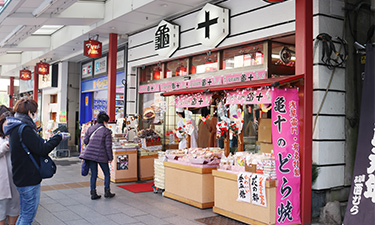
Mottled pattern in the image of the trunk of a black pine tree
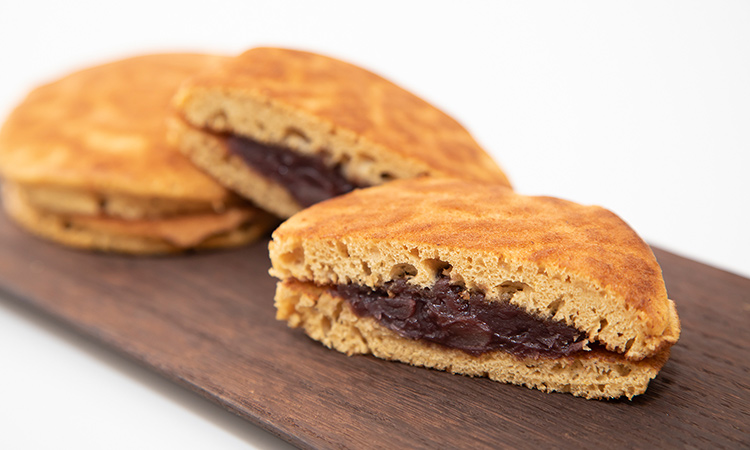
A popular characteristic item is “Kuromatsu,” a Dorayaki with patterns on the light mottled pancake resembling the patterns of animals such as tigers and giraffes. One of the staff, Mai Okada, explained the origin of the name: “The name derives from the patterns that resemble the bark on the trunk of Kuromatsu (black pine tree).” The red bean paste sandwiched between the pancakes, no two of which are the same, is made using red beans from Tokachi in Hokkaido. The beans are boiled making delicate adjustments each day, keeping an eye on changes in factors such as the temperature and humidity. Asked if the light sweetness is popular with everyone, Ms. Okada smilingly replied, “I’m happy to say that even customers and some of my relatives who don’t normally like sweet things enjoy the sweet taste.” Kuromatsu Honpo Sogetsu has always operated as a single shop throughout its history since its establishment and is dedicated to making delicious safe confections free of preservatives. When I asked why the Kuromatsu Dorayaki had maintained such popularity over the years since its first appearance in 1958, Ms. Okada explained, “I think it’s because of the sweetness that is just right, the handy size and the low price.” Customers attracted by the three points were lined up in front of the shop today too.
[Location]2-15-16 Higashi Jujo, Kita-ku, Tokyo
[Access]1-minute walk from the South Exit of Higashi Jujo station on the JR Keihin Tohoku Line
[TEL] 03-3914-7530
[Hours / fixed holidays]
9:00 – 19:00 / Closed on Tuesday (May change at busy times)
[Official site]
http://www.sogetsu.co.jp/index.htm
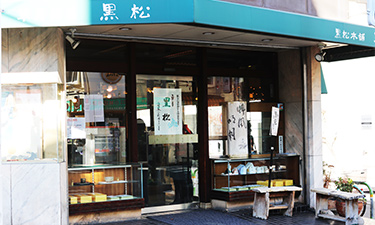
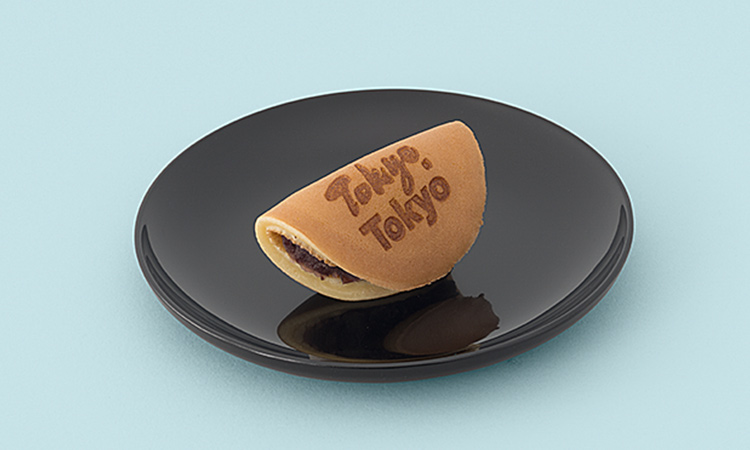
The Dorayaki of Kobikicho Yoshiya, a shop located on a back street near Kabukiza, have been certified by Metropolitan Tokyo as part of the “Tokyo Souvenir” production project. This excellent Dorayaki consists of bean paste wrapped in a single pancake in a half-moon shape and its dainty size makes it ideal even for Kabuki actors wearing makeup to eat. The size is also just right for the original branded marks imprinted on the pancake, attracting lots of attention from businesses thinking of having their company logos imprinted on Dorayaki. Dorayaki developed in collaboration with Metropolitan Tokyo as a “Tokyo Souvenir” are branded with a “Tokyo Tokyo” mark, the project’s emblem. Why not try the taste of Tokyo wrapped in a special paper napkin also designed for the project?
[Location]3-12-9 Ginza, Chuo-ku, Tokyo
[Access]1-minute walk from Higashi Ginza station on the Tokyo Metro Hibiya Line and the Toei Asakusa Line
[TEL]03-3541-9405
[Hours / fixed holidays]10:00 – 18:00 / Closed on Sundays and national holidays (Sometimes closed on Saturday)
[Official site] http://kobikichoyoshiya.com/


